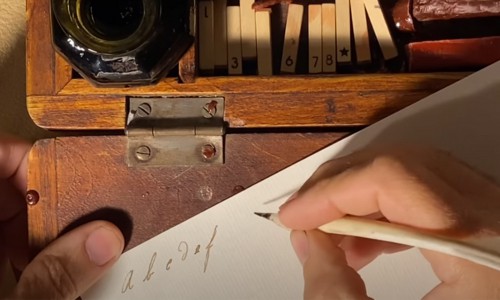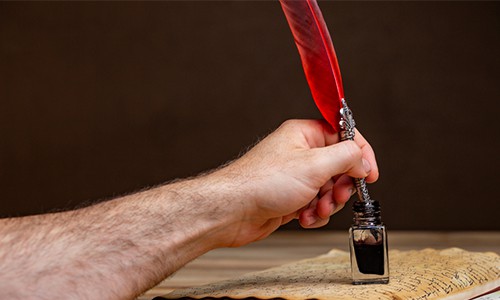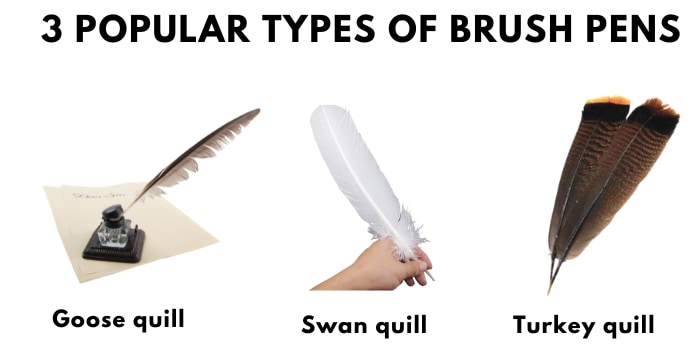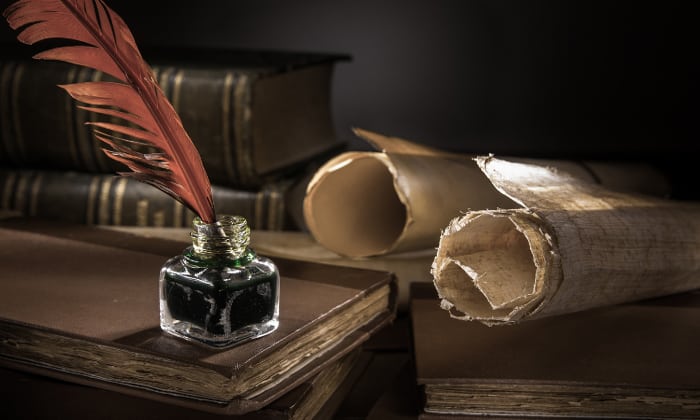Before the arrival of quills, people used styluses and reed pens to write on different materials. The text tablets were prone to breaking, stiff, and heat-responsive. Fortunately, a quill pen can tackle almost all of these issues.
These pens are made from various large, living bird feathers, including goose, swan, turkey, and others. Though the feather fountain pen isn’t as popular as in the olden days, you can still see its appearance in Court sessions in the US.
Needless to say, how to write with a quill pen is more than dipping it in ink and writing on paper, especially for beginners, which is why this article was written. Check out tips on using quill pens below.
Table of Contents
Steps to Write With a Quill Pen
You may also know quill pens as “feather pens” used popularly from the 7th century. Technically speaking, writing with a feather requires you to shape or recut the feather tip pen after a certain period due to the tip wearing out with use.
The good thing is no matter which calligraphy quill pens you use, you can apply the same writing instructions for sure.
However, if you use a crow quill pen, it actually doesn’t use feathers but is made up of metal instead, so it’s important to distinguish it from a traditional quill.
Step 1: Prepare your working area
Spread a flat cushion under your paper before writing to reduce the friction between the natural tip and rigid surface and slow down the wearing process.
We highly recommend using flat paper for several first uses and changing to textured paper to write beautiful strokes and gradually improve your skills.
The ink bottle should be open until the writing tasks are done for quick accessibility, as you need to dip the pen a lot of the time. On average, you can write approximately 3-6 words per dip.
Step 2: Use a quill pen correctly
The quill pens aren’t covered with a barrel; hence, they are pretty small compared to your hands. Remember to maintain a relaxed grip to avoid scratching the paper.
In case the feather makes you uncomfortable, you can trim it.
Natural feather pens are more fragile than metal ones. Hence, you shouldn’t apply strong pressure while gripping them; otherwise, the pens can be broken down. If you are a heavy-hand person, we’d suggest you write with a metal quill pen instead.
- The holding method is similar to other pens. Hold the pen at the part called the shaft with your thumb and index finger while the tip can rest on the paper.
- The position you should grab is at least 0.5 inches from the nib to see lines effortlessly.
Step 3: Dip ink
Immerse a quarter or half an inch of the tip in the inkwell; the hollow shaft will suck and hold the ink, then distribute it through a slit thanks to capillary action.
Take enough ink for writing per dip. You can tap or sweep the tip on the bottle opening to eliminate excess ink. Otherwise, it’s likely to create ink smudges on paper.
Note that the nib absorbs ink and becomes softer after a while. We recommend you prepare 3-4 quill pens to swap while waiting for the others to dry fully.
Step 4: Determine the sweet point and write strokes
- A perfect sweet point combines a proper angle and nib orientation. You should start from the top of the page with light strokes in cursive style.
- Place the tip at 45 degrees to the paper at first. When you are familiar with how do quill pens work, change the angle from 45 to 90 degrees to find a sweet spot suitable for your taste.
- Use the back side of the tip to write instead of turning it too much, making the tip blunt.
Note:
- To have narrow lines, the nib should face the left side for right-handed people and in the opposite direction for left-handed individuals. A nib that is straight downward or upward will create thick lines.
- Turning or rolling the quill is more complex than you think; hence, the letters can be wider than natural ones.
- To have uniform words, you mustn’t change the direction and lift the pen when writing. If not, the strokes’ thickness won’t maintain and the ink spots will appear anywhere. Plus, avoid lingering in one place for too long, or some parts of the letter will be more pigmented than others.
- Don’t touch the ink before it can dry.
Step 5: Apply proper pressure and write with ink and quill
Use enough pressure to leave ink on paper, about slightly less than what you’d use to write ballpoint pens.
Also, don’t drag the pen roughly; lightly touch and glide it across paper. You don’t want to ruin the tips or the paper itself.
Step 6: Dry ink marks
You need to air-dry marks before touching them; hence, working in a ventilated space is recommended.
Sprinkle sand on your ink words and wait for several minutes.
After that, you can shake or blow the sand to have a finished document.
Step 7: Clean the pen
Once you’re done, get rid of excess ink and paper crumbs from the tip by immersing it in clean water.
Air-dry natural tips before storing. For metal tips, soak up moisture with a cloth or paper towel to avoid rusting.
Watch this video: Writing with a quill pen always offers you nostalgic feelings bringing you back to the 7th century.
FAQs
Types of quill pens
Almost all people are right-handed; hence, quills are taken from the left wings of birds. Artisans choose the 5-6 largest feathers to make a quill pen. The right time to “harvest quills” is when birds have new feathers in the spring.
The standard feather length should be around 12 inches and shortened to 8-9 inches. The feather around the shaft will be eliminated before cutting the tip at 70 degrees.
Quills can be made from owls, hawks, crows, and eagles, but the most common ones are below due to their hard tips.
- Goose quill
- Swan quill
- Turkey quill
Types of ink to use with a quill pen
You have many options when writing with a quill and ink. Generally speaking, quill pen ink should be cloudy with some lightness instead of too thick and slow to flow.
- Calligraphy ink stands out as being a lightfast option thanks to pigment ingredients.
- Iron gall ink has been around for decades. Therefore, it can lend a historical touch to your masterpieces with a bold black tone.
- Walnut ink boasts an eye-catching brown shade for strokes and medium viscosity to produce continuous flow.
- Sumi ink offers you several colors, but the most preferred shade is black. It is not only great for writing but also suitable for an art style known as sumi-e.
- Liquid grape concentrate can save you from lacking quill ink in urgent cases.
Caring for your quill pen
- Ensure the tips and parts of a quill pen are always clean and dry after each use.
- Store quills in pen holders to protect natural and metal tips from damage.
- If you leave the quill in ink, the tip can become too soft to write over time. As a result, your pen will be useless soon.
- After certain periods, sharpen the quill when you realize it is dull and producing too much ink. If you apply hard pressure while writing, you must fix the tip regularly. Depending on your habits, you can use a quill for one week before it is too short to recut.
Is it easy to write with a quill pen?
Actually, using a quill seems to be a bit more laborious compared to other tools, since the pressure should be applied on the pen lightly, which takes quite a lot of time during first tries.
The good news is you can improve by practicing often. Don’t forget to heed the tips above to avoid ink blots on paper.
Is it possible to use a quill pen with the left hand?
Overall, you can write with a quill pen left-handed, but you may face more challenges than right-handed people. However, you can eliminate troubles if following our suggestions:
- Modify paper and hand positions for easy overwriting and underwriting.
- Using a metal nib is recommended for smooth glides.
- Utilize fast-drying inks and try to release thick and thin strokes properly so that your letters won’t look like reversed lines.
Conclusion
How to write with a quill pen isn’t too complicated to learn, but you should still pay attention to several special points, including hand grip position, writing angle, and proper pressure to maneuver the pen and write calligraphy smoothly.
Cheap feather pens are natural products, so they can become dull over time, especially when you use harsh force. Therefore, you have to recut them to ensure the ink is produced consistently. Good luck with utilizing a quill pen to create calligraphy masterpieces.

Art has always been a part of my life; it influences my upbringing and later my career choice. For me, it is always a part of my parenting technique. So for whichever purpose that you come to art, you can start here with us.






